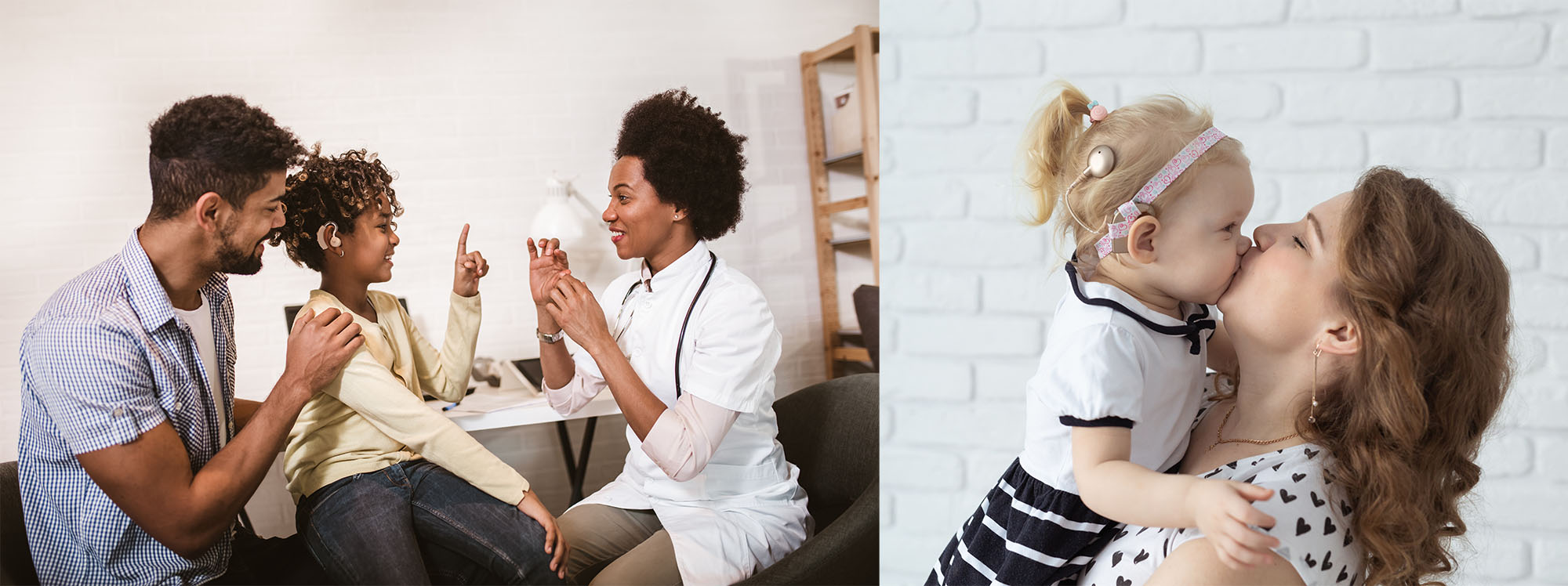Your Child’s Journey: An Ohio Guide for Deaf or Hard of Hearing Support

Welcome! This guide is designed to support you and your family as you journey through life caring for a child who is deaf/hard of hearing (D/HH). This exciting journey may present unique challenges and victories. Our goal is for families to be informed, connected, and empowered to make the best choices possible for their child as they grow and live their best life.
This guide was made to help you:
- Learn critical, unbiased information specifically about access for children who are deaf or hard of hearing.
- Understand how the health, education, and community agencies in Ohio work together to form a system to support you, your family, and your D/HH child.
- Be aware of the range of medical and educational options available, so you can make informed choices.
- Discover resources to connect with other families like yours.
As you travel along with this guide, please keep the following in mind:
Perspective
Professional educators, audiologists, doctors, other families and individuals who are deaf or hard of hearing will have a variety of ideas and opinions to share with you. Consider these multiple points of view carefully as they relate to your family’s particular needs.
Organization
Think about how to get organized. Will you take notes on your phone in a Google doc, or with pen and a notebook? Will you want digital records, or printed records? Records may include medical/health, services, and education. Should those records go into an electronic folder, or paper folder? Will you remember appointments best through an electronic calendar on a phone, or a printed one on your fridge? Consider the best organizational process for you and your family.
Self-Care
As this journey unfolds, keep up your energy by taking care of yourself. Your care is just as important as your child’s, and the other members of your family.
Person First and Disability First Language
The Outreach Center works to create an inclusive culture by respecting the diverse ways people identify themselves. We may use person-first language, disability-first language, or a combination of both, depending on individual preferences and context. For example, in the medical world the term “hearing loss” is often used, but in the social world, deaf or hard of hearing is more often used. Therefore, you will see a range of language used to describe identity and conditions throughout this guide. Terms include child who is deaf/hard of hearing (D/HH), deaf child, hearing status, hearing condition, or hearing loss. Are you wondering which term to use yourself? Use whichever language feels most comfortable for your child and family.
Funded by the Ohio Department of Education and Workforce, Office for Exceptional Children.

*Disclaimer
This resource guide is intended for informational purposes only and is not a substitute for medical, educational, or legal advice. Always consult a qualified professional for health or education concerns. The Outreach Center for Deafness and Blindness at OCALI makes every effort to provide information that is accurate and timely and is not responsible for the availability or content of the external resources included. The Outreach Center does not endorse any brand, company, product, or organization mentioned.
Updated June 2025.